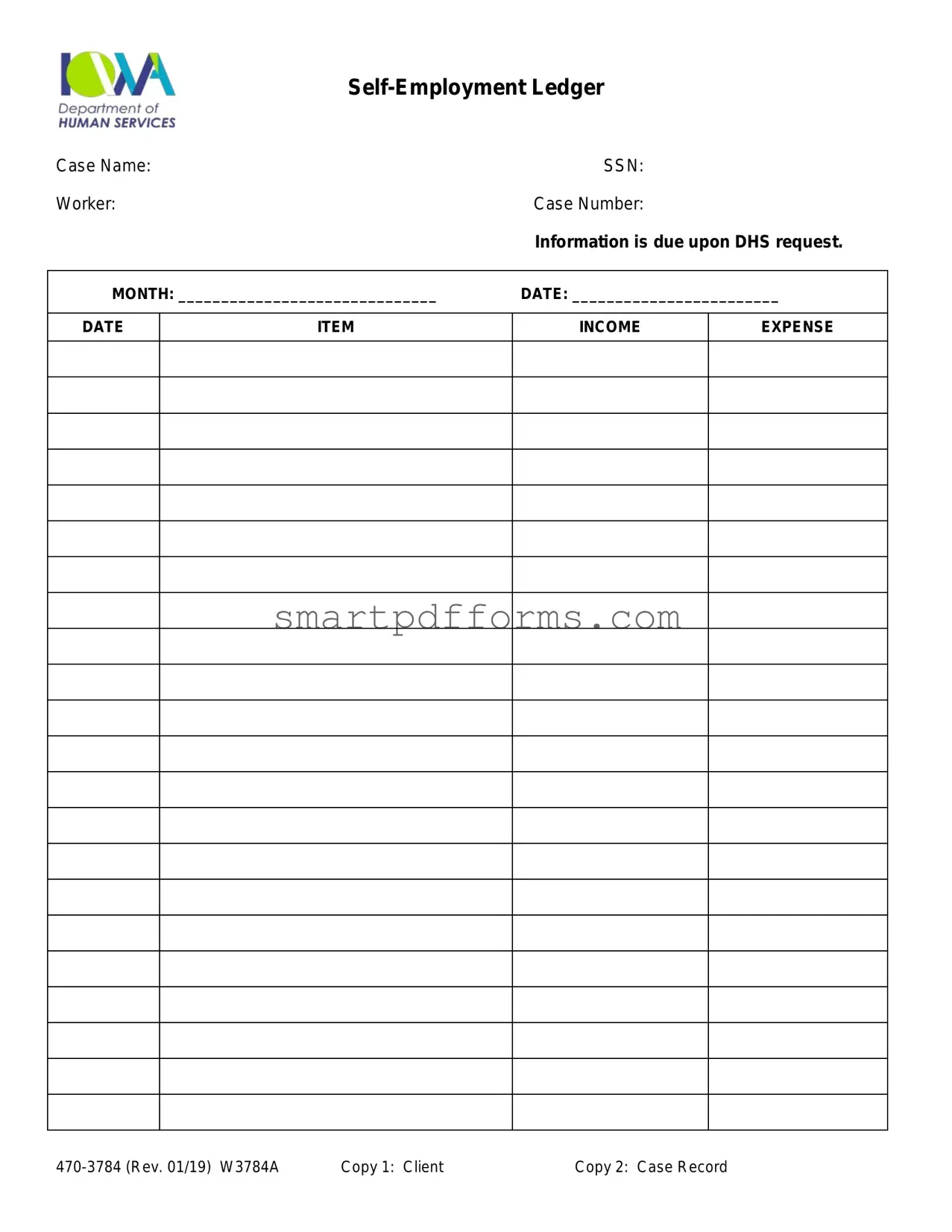Blank Self Employment Ledger PDF Template
The Self Employment Ledger form, issued by the Iowa Department of Human Services, serves as a crucial document for individuals to formally record and report their self-employed earnings and expenses on a monthly basis. It's designed to maintain an organized account for both the individual and the case worker, ensuring transparent and accurate financial reporting. For those navigating self-employment, proper completion and submission of this ledger play a significant role in benefits eligibility and assessment. To streamline this essential process, consider filling out the form by clicking the button below.
Make This Document Now

